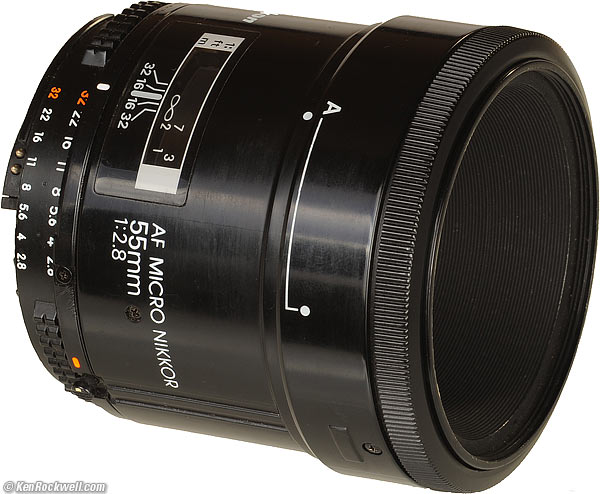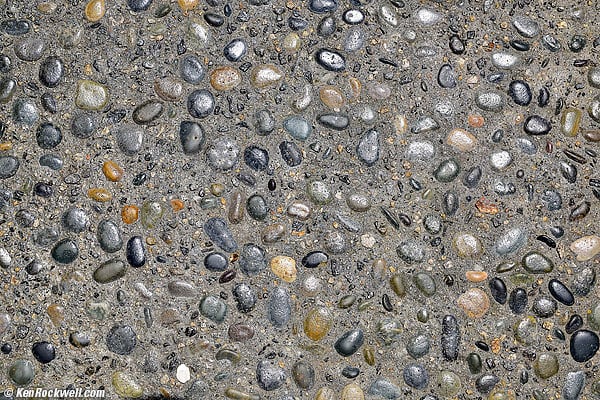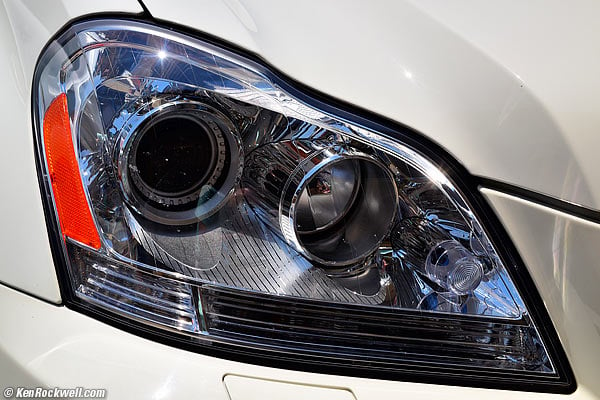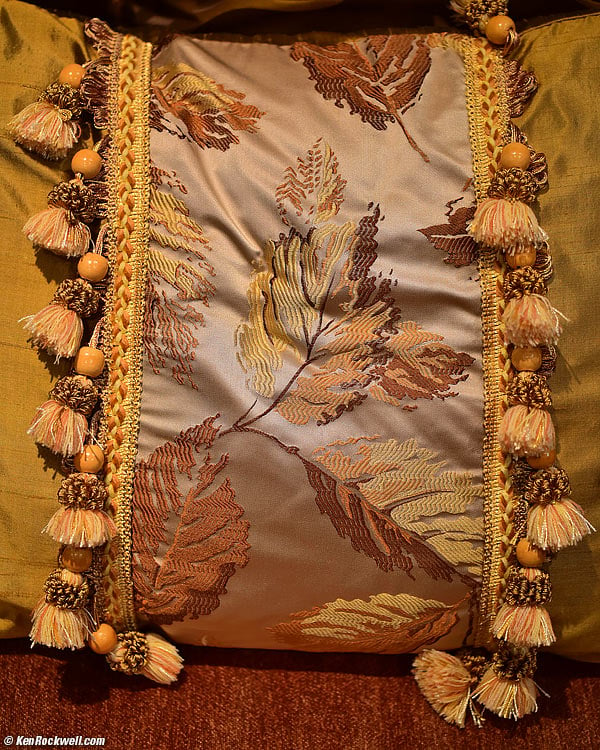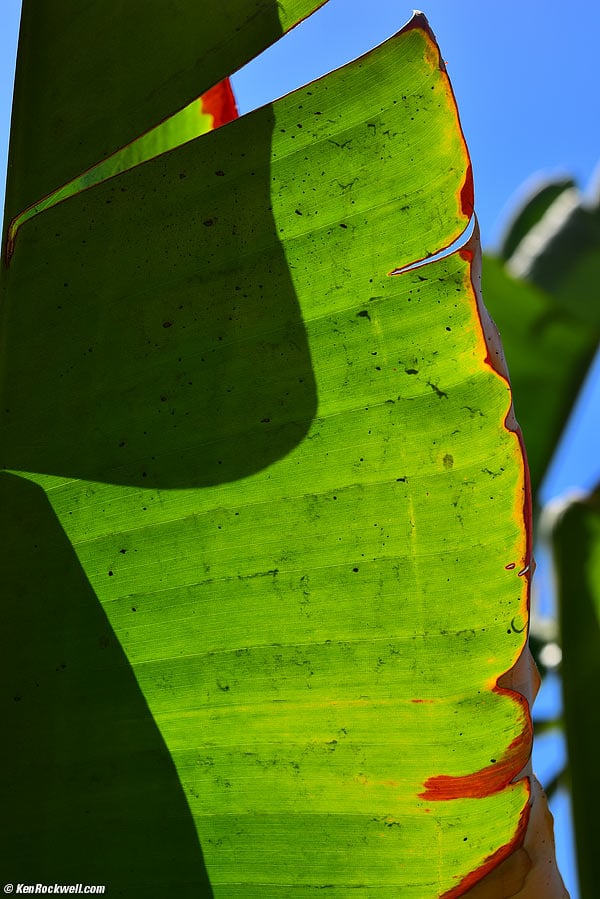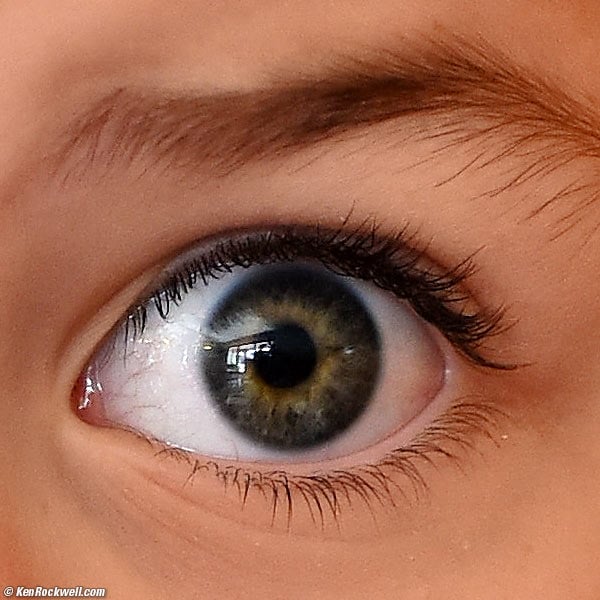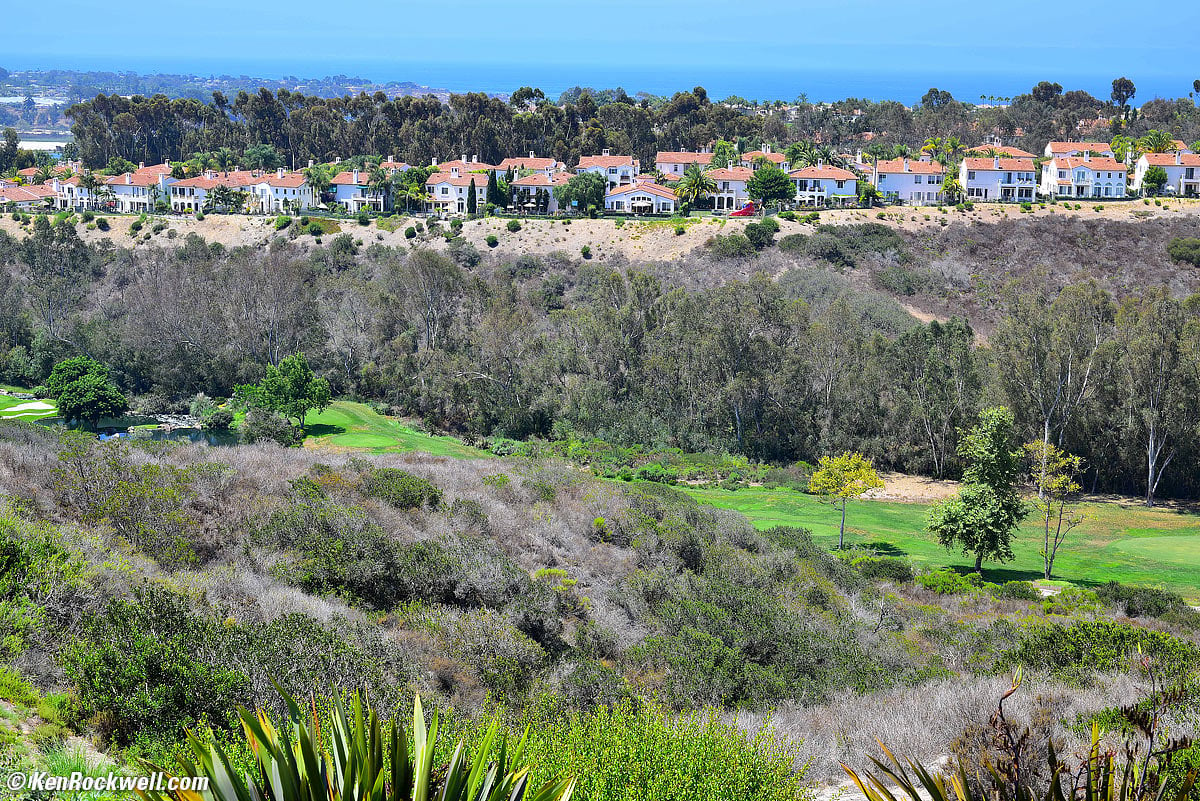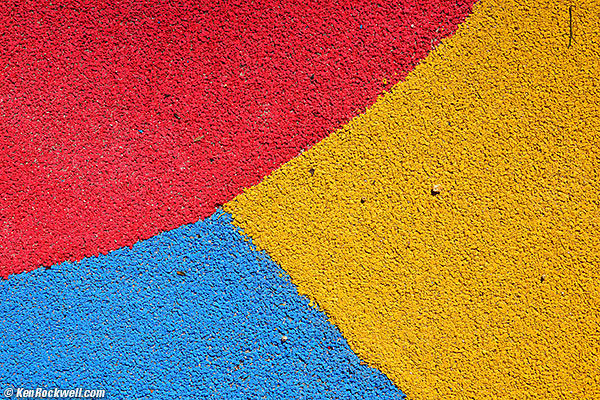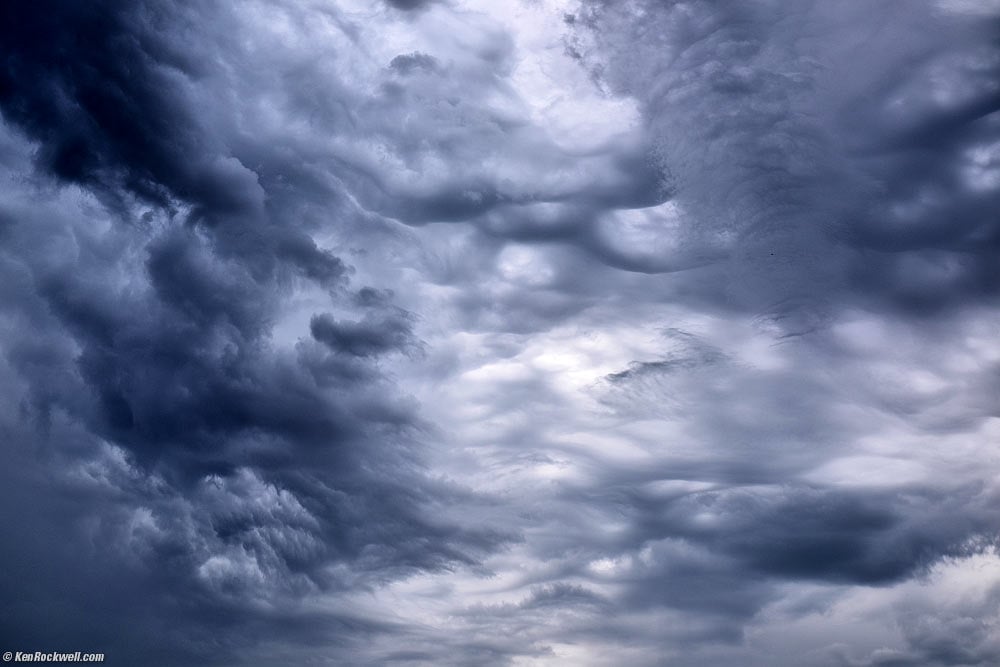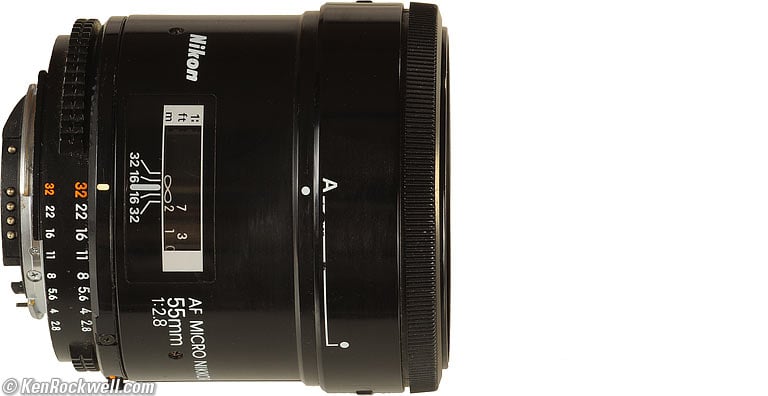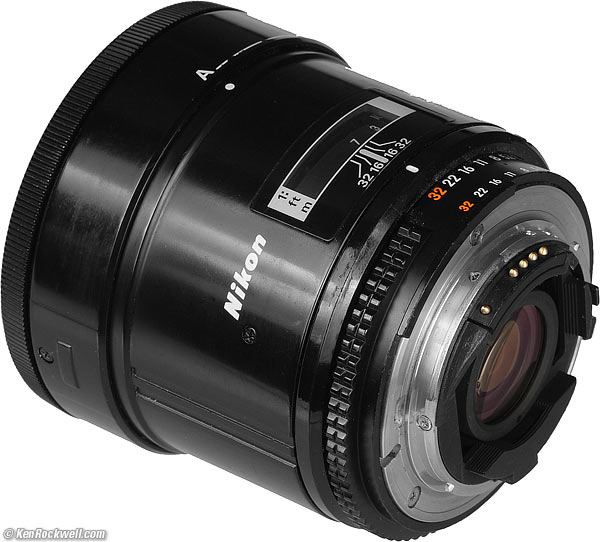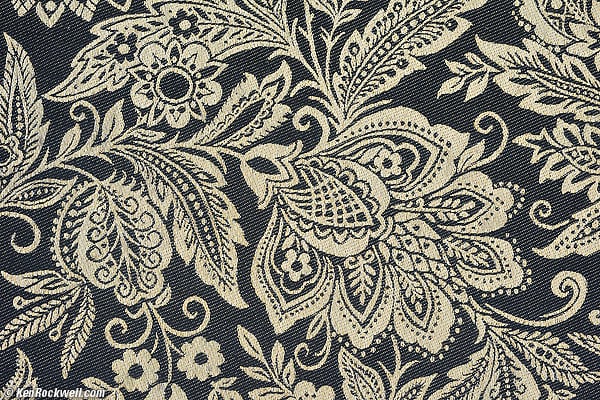Home Donate New Search Gallery Reviews How-To Books Links Workshops About Contact
Nikon 55mm f/2.8
AF MICRO-NIKKOR (1987-1989)
© 2013 KenRockwell.com. All rights reserved.
How to Shoot Macro Best Macro Lenses Compared
Intro Specifications Performance Recommendations
Nikon AF MICRO-NIKKOR 55mm f/2.8 (FX, DX and 35mm coverage, 1:1 macro, 62mm filters, 13.9 oz./394g, 1:1 macro, about $175 used). enlarge. I got this one at this directly link to it at eBay (see How to Win at eBay).
This free website's biggest source of support is when you use those or any of these links when you get anything, regardless of the country in which you live. It helps me keep adding to this free website when you get your things through these links — but I receive nothing for my efforts if you buy elsewhere. Please always use those or these links for the best prices and service. Thanks for helping me help you! Ken.
August 2014 Nikon Reviews Nikon Lenses All Reviews
Compared to 60mm f/2.8 AF-D and AF-S.
Why fixed lenses take better pictures.
| Optics: | |
| Ergonomics: | |
| Usefulness: | |
| Availability: | |
| Overall: |
Ideal Uses: Ultra-sharp, low-distortion, ultra-high performance FX lens for use with D3, D700, D3x and film. Especially good for close-ups, scanning or copying slides and as a normal everyday lens if you don't shoot in dim light without flash.
Not for: No autofocus on D40, D40x, D60, D3000, D3100, D3200, D5000, D5100 or D5200, but if you focus manually, everything else works great. In very low light, the 50mm f/1.8 AF and 50mm f/1.4 AF are better ideas. No 55mm or 60mm lens is for serious macro work since you never have enough room (working distance) between your lens and your subject to stay out of your own lighting. For serious macro work, use at least a 105mm lens.
Sample Images top
Katie and her MacBook Air, Sunday, 01 October 2017. She's playing a fox game on Roblox. Nikon D850, Nikon AF MICRO-NIKKOR 55mm f/2.8 at f/2.8 at 1/125 at Auto ISO 1,600, Perfectly Clear. bigger or full-resolution file to explore on your computer (mobile devices rarely can display the full resolution files properly).
1,200 x 900 pixel crop from above. bigger or full-resolution file to explore on your computer (mobile devices rarely can display the full resolution files properly).
Canary Palm, 31 July 2014. Nikon D810, 55mm f/2.8 AF Micro-NIKKOR, f/8 at 1/250 at ISO 100, Perfectly Clear. Camera-original © LARGE NORMAL JPG file and full-resolution file as processed by Perfectly Clear.
Stones, 30 July 2014. Nikon D810, 55mm f/2.8 AF Micro-NIKKOR, f/9 at 1/320 at ISO 100. Camera-original © LARGE BASIC JPG file.
Dirty Headlight, 30 July 2014. Nikon D810, 55mm f/2.8 AF Micro-NIKKOR, f/9 at 1/320 at ISO 100, Perfectly Clear. Full-Resolution image from camera-original LARGE BASIC JPG.
Persian Pillow under dimmed halogen light, 8:22 PM, 31 July 2014. Nikon D810, 55mm f/2.8 AF Micro-NIKKOR, f/2.8 at 1/60 at Auto ISO 800, Perfectly Clear. bigger or © Full-resolution 4:5 LARGE BASIC JPG file.
Botanical record, Don José's, 01 August 2014. Nikon D810, 55mm f/2.8 AF Micro-NIKKOR, f/8 at 1/250 at Auto ISO 100. © Camera-original LARGE BASIC JPG file.
ISO 560: Katie drinking, 10:40 AM, 31 July 2014. Nikon D810, 55mm f/2.8 AF Micro-NIKKOR, f/2.8 at 1/125 at Auto ISO 560. © Camera-original LARGE BASIC JPG file.
Crop from above image at 100%. If this is 6" (15cm) wide on your monitor, the entire image printed at this same high magnification would be a whopping 75 x 50" (6 x 4 feet or 1.9 x 1.3 meters)! © Camera-original LARGE BASIC JPG file.
You can clearly see the restaurant reflected in little Katie's eyeball. Do we need any more resolution?
Processed surveillance image, 1852:10 UTC 31 July 2014. Nikon D810, 55mm f/2.8 AF Micro-NIKKOR, f/8 at 1/250 at ISO 100, Perfectly Clear. Full resolution.
At the Park, 05 August 2014. Nikon D810, 55mm f/2.8 AF Micro-NIKKOR, f/8 at 1/250 at ISO 100, © Camera-original LARGE BASIC JPG file.
Scary thunderstorm, 02 August 2014. (Nikon D810, 55mm f/2.8 AF Micro-NIKKOR, f/5.6 at 1/125 at ISO 100, Picture Control set to VIVID with +3 Saturation, +5 Clarity and +3 Contrast, Perfectly Clear.) bigger.
Introduction top
Intro Specifications Performance Recommendations
Compatibility History and Production Pricing
The 55mm f/2.8 F is Nikon's first autofocus macro lens. It's also Nikon's sharpest autofocus lens. It uses the same optics as the extraordinary 55mm f/2.8 AI-s manual focus lens. This AF lens adds autofocus and extends the macro range to life size (1:1) in one continuous focus range. This is among Nikon's sharpest lenses ever, even wide-open at f/2.8.
Nikon calls their macro lenses "Micro," and I'll use the two words interchangeably.
When it came out with Nikon's other first AF lenses in 1986, everyone laughed because these were all plastic, and had hard, thin, nasty plastic focus rings.
Only the outsides were plastic, to fit in with all the other 1980's hi-tech consumer electronics of the day. The insides are all metal. People, including myself, passed on these lenses back then because we didn't think they'd work well or hold up over time. We were wrong: this lens is over twenty years old and still outperforms most of my other new lenses.
Even funnier to those of us with long-term outlooks, I'd rather own this excellent old klunker than the newest 60mm f/2.8 AF-S because this 55mm always autofocuses, even if I'm at the wrong end of the focus range. The newest AF-S lenses tend to hang-up and not autofocus if the focus is too far off to start, and the newest AF-S lens has 1/4" less working distance.
The optics of this lens, the 55mm f/2.8 AI-s manual focus, the 60mm f/2.8 AF-D and 60mm f/2.8 AF-S are all virtually perfect. Any attempt to pick a winner among them will lead to your own insanity; they are all this good.
Today I'd buy the 60mm f/2.8 AF-D, simply because these old 55mm AF lenses are very hard to find used. The 60mm AF-D is better for macro because it allows an extra 3/4" of working distance, however this 55mm lens is sharper for use at regular distances if you're really counting pixels.
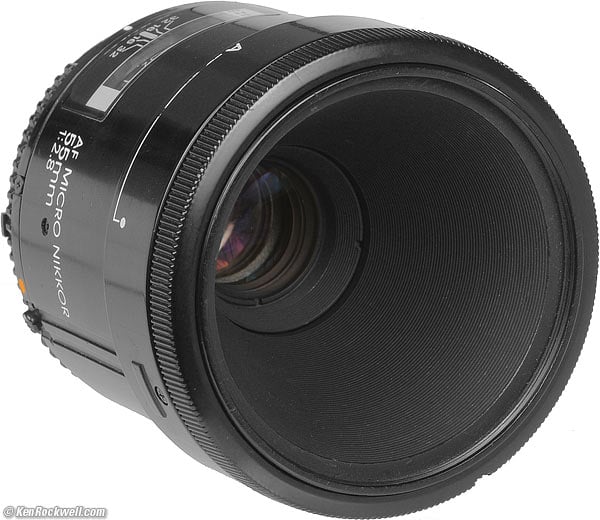
Deeply inset glass: no hood needed.
Compatibility back to intro back to top
The 55mm f/2.8 AF works great with almost every film and digital Nikon camera made since 1977. If you have a coupling prong added to the diaphragm ring, it's perfect with every Nikon back to the original Nikon F of 1959.
The only incompatibility is that it will not autofocus with the cheapest D40, D40x and D60, but if you focus manually, everything else works great. The D40, D40x and D60 even have in-finder focus confirmation dots to help you.
See Nikon Lens Compatibility for details on your camera. Read down the "AF, AF-D (screw)" column for this lens.
History and Production back to intro back to top
1956-1961
Nikon made a 55mm f/3.5 Micro for rangefinder cameras. God only knows how you focused or composed.
1961-1979
Nikon made various versions of a 55mm f/3.5 manual-focus Micro. Nikon made about a half-million of these.
1979 -today
Nikon still makes the excellent manual focus 55mm f/2.8 AI-s Micro-Nikkor. Nikon has made about 600,000 of these — so far.
1986-1989
This 55mm f/2.8 AF, Nikon's first AF micro. Nikon only made about 50,000 of these. These hit the store shelves in early 1987.
1989-1993
60mm f/2.8 AF, the otherwise identical non-D version of the next 60mm AF-D lens. Nikon made about 150,000 of these non-D 60mm AF lenses.
1993-2008
60mm f/2.8 AF-D, which is the same as the previous 60mm f/2.8 AF but adds the minor D feature. Nikon has made about 250,000 of the AF-D versions, or about 400,000 total of the first 60mm AF — so far.
2008 -today
The 60mm AF-S Micro is introduced to replace the 60mm AF-D Micro.
Pricing back to intro back to top
Price,
new* |
Corrected for inflation, 2008 |
|
1987 |
too new to advertise |
|
1991 |
$300 (leftover) |
$482 |
2008 |
$350 (55mm manual focus) $400 (60mm AFD) |
$150-$275 used (55mm AF) |
2013 |
$400 (55mm manual focus) $429 (60mm AFD) |
$150-$275 used (55mm AF) |
* At full NYC discount. Very few people bought their lenses this inexpensively back then.
Specifications with commentary top
Intro Specifications Performance Recommendations
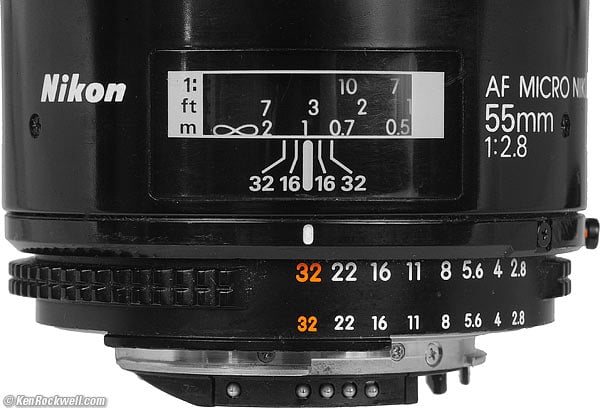
Indicators. Note that feet and meters are both white, along with the reproduction ratio. This is confusing!
Optics
6 elements in 5 groups.
Close-Range Correction (CRC) with floating elements. This lens continuously adjusts itself for optimum performance at every focus distance.
It's multicoated, which Nikon calls Nikon Integrated Coating.
Close Focus
9" (0.228m) from the subject to the image plane (the back of the camera).
2-1/8" (55mm) from the front of the lens.
Maximum Reproduction Ratio
1:1.
Hard Infinity Focus Stop
Yes, but its not always perfect.
Depth-of-Field Scale
Yes, but only for f/16 and f/32.
Infra-Red Focus Index
No.
Diaphragm
7 straight blades.
Stops down to f/32 at infinity and f/64 at 1:1.
Aperture Ring
Yes, full-stop clicks.
Filter Thread
62mm, plastic.
Does not rotate.
Size
Nikon specifies 2.91" (74mm) extension from flange (3.23" [82mm} overall) by 2.91" (74mm) diameter at infinity.
At 1:1, it extends to a total of 5.16" (131mm) from the flange.
Weight
13.895 oz. (393.95g), measured.
Nikon specifies 14.8 oz. (420g).
Hood
Not needed; incorporated into lens.
Apocrypha suggests the HN-22 may be used, but you won't need it.
Case
Optional CL-32S, pouch #62 or CP-8 clear plastic bubble case.
Teleconverters
TC-200/201 and TC-14A, manual-focus.
Performance top
Intro Specifications Performance Recommendations
Overall Focus Color Coma Distortion Ergonomics Falloff
Ghosts Color Fringes Maximum Aperture Mechanics
Sharpness Spherochromatism Working Distance Comparisons
Overall back to Performance back to top
The 55mm f/2.8 AF is Nikon's sharpest lens.
Its mechanics are klunky and plasticy, but the image is the sharpest and least distorted there is from Nikon, even in the corners of FX at f/2.8.
Like most traditional AF lenses, you must use the switch on the camera to switch between auto and manual focus.
Another complaint is that the feet, meters and reproduction ratio scales are all the same color: white. When using the lens, its confusing not to have meters in white, feet in yellow and repro ratio in orange, as other Nikon micro lenses. When using this lens, they all look the same.

